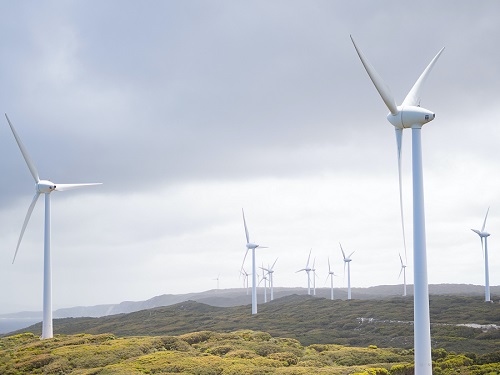
Apple’s Vice President of the environment, Lisa Jackson, has announced that all iPhones will be powered by renewable energy by 2030.
Acquiring Renewable Energy From Wind Farm
The announcement was made in Australia while celebrating the company’s 40th anniversary there. It is understood that, in line with this announcement, Apple will be acquiring renewable energy from a new Australian wind farm in Queensland, which could supply 80,000 homes with electricity.
Lisa Jackson said of this latest green target, “At Apple, we recognise the urgent need to address the climate crisis, and we’re accelerating our global work to ensure our products have a net-zero climate footprint across their entire lifecycle.”
Entire Business Carbon Neutral By 2030
The hope is that in addition to already achieving carbon neutrality two years ago for its corporate activities e.g., Retail Stores, Offices, and Travel, Apple now plans to make its entire business, including supply chain and customer products carbon neutral by 2030. This means that iPads, Macs, and iPhones will need to run entirely on renewable energy by that date.
How?
The reason why Apple can say this when you’re plugging your iPhone charger or Mac into your normal electric socket at home as usual is because it has it has examined usage patterns across its 1.8 billion devices and knows that this accounts for 22 per cent of the company’s overall carbon footprint. Therefore, if Apple can offset that percentage with renewable energy from projects like the massive Australian windfarm, it will be able to say that it has reached carbon neutral status for its users’ devices and is powering all iPhones with renewable energy.
Global Facilities Powered By Clean Energy Since 2018
Apple has long been committed to reducing its carbon footprint. For example, as far back as April 2018, Apple announced that, as part of its commitment to combat climate change and create a healthier environment, its global facilities were powered with 100 percent clean energy. At the time, this included its retail stores, offices, data centres and co-located facilities in 43 countries, including the UK.
What Does This Mean For Your Organisation?
Apple is one of the many big tech companies engaged in looking seriously at reducing the carbon footprint of their entire chain and making sure that this is widely communicated to customers. Critics could point to how most of an iPhone’s lifetime carbon emissions are made in the production phase and to news stories such as a lawsuit against a recycler that appeared to have instead diverted old phones to China (in 2020). Also, the company’s drive to sell new devices inevitably has green consequences and, as organisations like Greenpeace have said, offsetting projects don’t deliver what’s actually needed which is “a reduction in the carbon emissions entering the atmosphere.” That said Apple has been focusing for many years on how it can become a much greener company. It is which is good news for all users of their products and for wider society that a massive global business is setting itself some quite challenging environmental targets.




